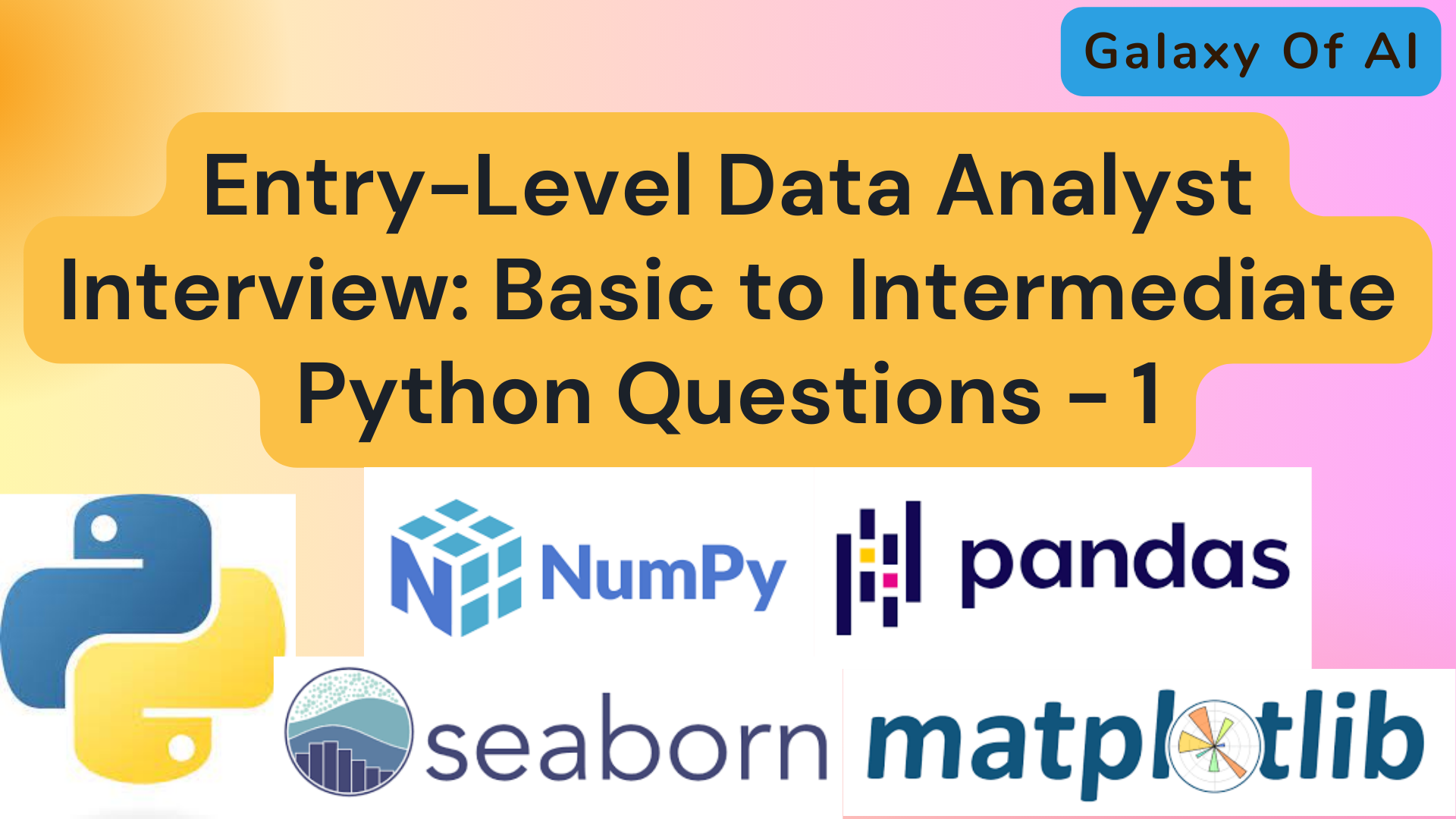Hello Learners…
Welcome to the blog…
Table Of Contents
- Introduction
- Entry-Level Data Analyst Interview: Basic to Intermediate Python Questions – 1
- Pandas
- NumPy
- Matplotlib
- Seaborn
- Summary
- References
Introduction
In this post, we present a set of Entry-Level Data Analyst Interview Questions in Basic to Intermediate Python – Part 1, which will assist you in your interview preparation.
Entry-Level Data Analyst Interview: Basic to Intermediate Python Questions – 1
Some Basic to Medium Python interview questions for entry level Data analyst role: –
Pandas

1. What is Pandas, and why is it popular in data analysis?
2. How do you import Pandas in Python?
3. What is a DataFrame in Pandas?
4. How do you read a CSV file into a Pandas DataFrame?
5. How can you check the first few rows and last few rows of a DataFrame?
6. What is the difference between loc and iloc in Pandas?
7. How do you select a specific column in a DataFrame?
8. How do you filter rows in a DataFrame based on a condition?
9. How do you handle missing values in Pandas?
10. Explain the process of merging two DataFrames in Pandas.
11. What is the purpose of the groupby function in Pandas, and how is it used?
12. How can you rename columns in a DataFrame?
13. Explain the difference between Series and DataFrame in Pandas.
14. What is the purpose of the apply function in Pandas, and how is it used?
15. How do you export a Pandas DataFrame to a CSV file?
16. Explain the concept of pivot tables in Pandas.
NumPy

17. What is NumPy, and how is it different from Python lists?
18. How do you create a NumPy array?
19. Explain the concept of broadcasting in NumPy.
20. How do you perform element-wise addition of two NumPy arrays?
21. What is the purpose of the np.mean() function in NumPy?
22. How do you reshape a NumPy array?
23. What is the difference between np.dot() and np.matmul() in NumPy?
24. How can you find the maximum and minimum values in a NumPy array?
25. Explain the use of NumPy’s random module for generating random numbers.
Matplotlib

26. What is Matplotlib, and how is it used for data visualization in Python?
27. How do you create a basic line plot using Matplotlib?
28. Explain the difference between plt.figure() and plt.subplots() in Matplotlib.
29. How can you add labels to the x-axis and y-axis in a Matplotlib plot?
30. What is the purpose of the plt.legend() function in Matplotlib?
31. How do you save a Matplotlib plot as an image file?
32. Explain the difference between a scatter plot and a line plot in Matplotlib.
Seaborn

33. What is Seaborn, and how does it compare to Matplotlib for data visualization?
34. How do you create a histogram using Seaborn?
35. What is a heatmap, and how can you create one using Seaborn?
36. How do you customize the color palette in a Seaborn plot?
37. Explain the use of the sns.countplot() function in Seaborn.
38. How can you create subplots in a Seaborn figure using the sns.FacetGrid
We will go through the answers of every above questions in next post, stay with us.
Summary
To learn more about Python please visit below URLs:
Happy Learning And Keep Learning…
Thank You…

I do not even know how I ended up here but I thought this post was great I dont know who you are but definitely youre going to a famous blogger if you arent already Cheers
I simply could not go away your web site prior to suggesting that I really enjoyed the standard info a person supply on your guests Is going to be back incessantly to investigate crosscheck new posts
I very delighted to find this internet site on bing, just what I was searching for as well saved to fav
Hi my family member I want to say that this post is awesome nice written and come with approximately all significant infos I would like to peer extra posts like this